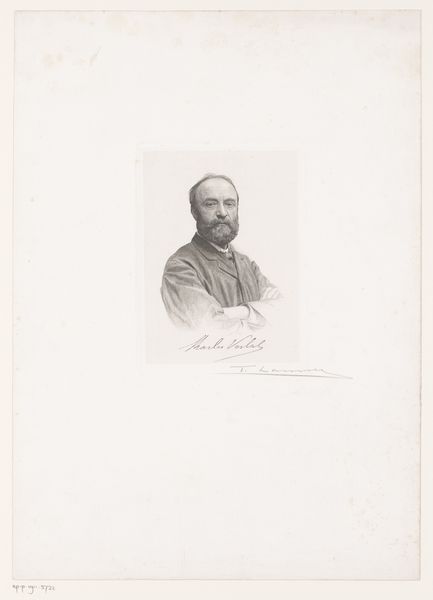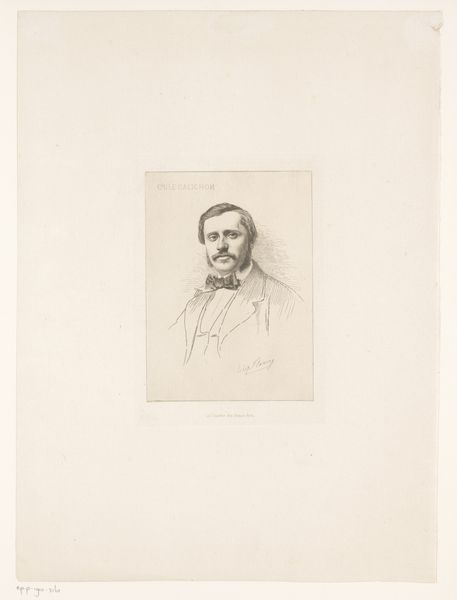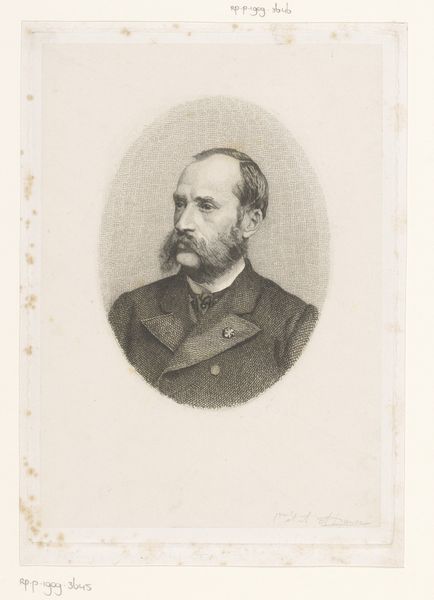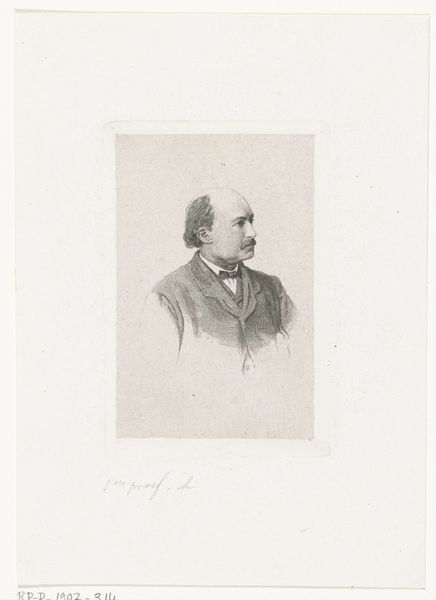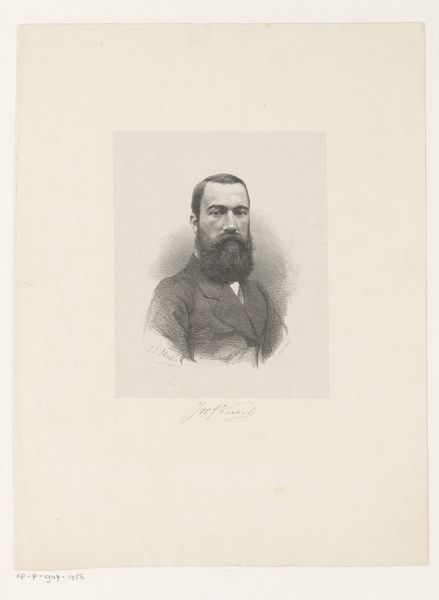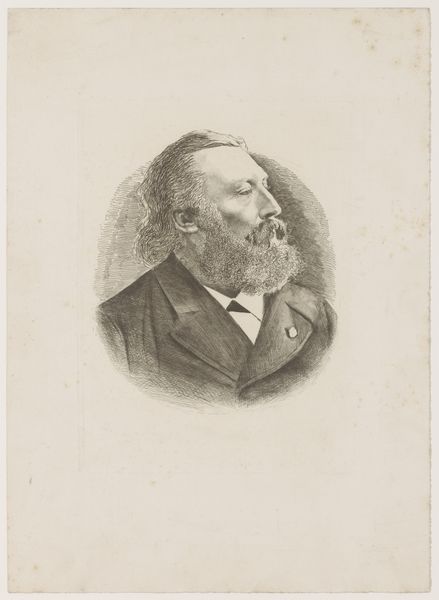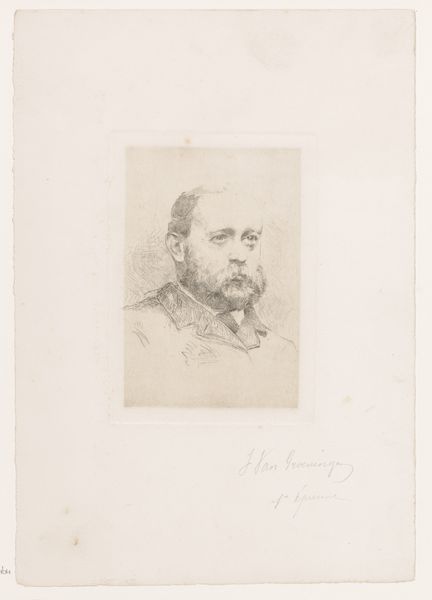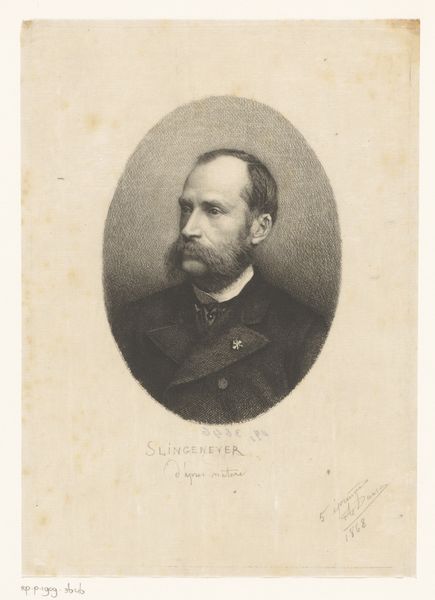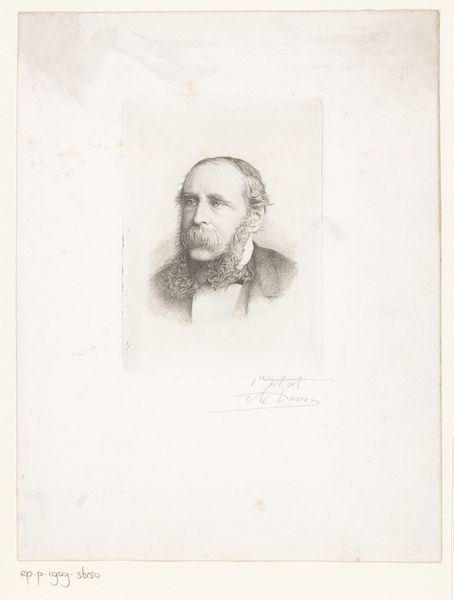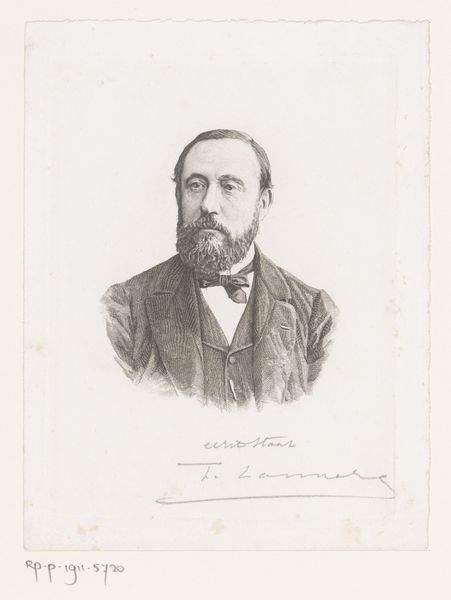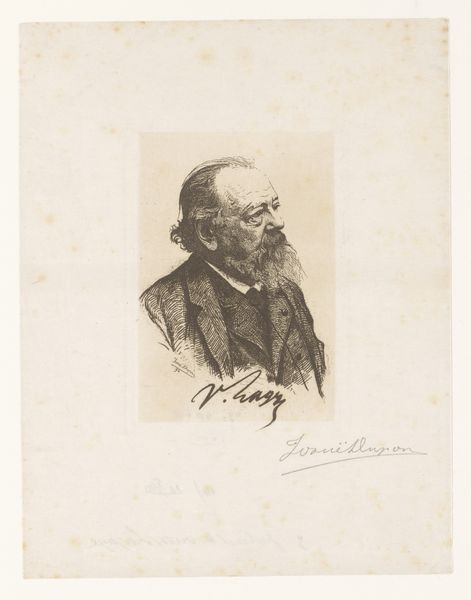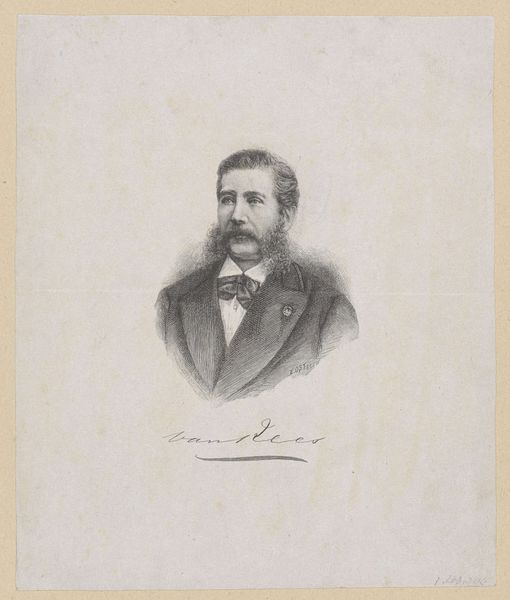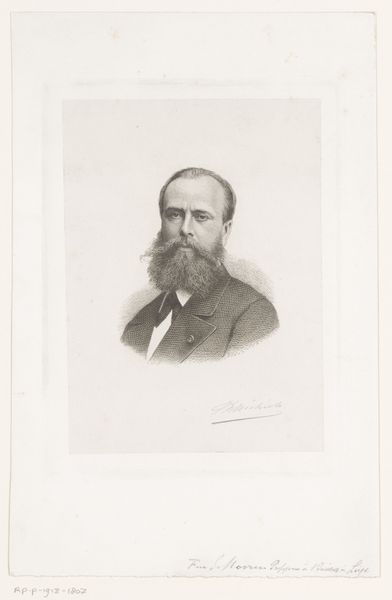
print, engraving
#
portrait
# print
#
old engraving style
#
pencil drawing
#
engraving
#
realism
Dimensions: height 138 mm, width 98 mm
Copyright: Rijks Museum: Open Domain
Curator: This is a work called "Portret van een onbekende man, mogelijk G.J. Witteveen" which roughly translates to "Portrait of an unknown man, possibly G.J. Witteveen". It was created sometime between 1850 and 1910 by Fr. van Groeningen. We believe it's an engraving, a kind of printmaking. Editor: It feels very… buttoned-up, doesn’t it? So contained. Look at the sharp lines of his coat, contrasting with the softer beard. You almost expect him to clear his throat and start giving you advice on investing in railways. Curator: Well, portraits like this were often commissioned to project an image of respectability, stability. Consider the socio-political context of the time: the rising middle class, the emphasis on personal achievement. This portrait would have served to cement his place in society, whether it was displayed in his home or perhaps even used for business purposes. Editor: Absolutely. But what gets me is how the engraving technique itself adds to that sense of… restraint. The delicate lines, the limited tonal range – it’s as if every mark had to be carefully considered and earned. Nothing feels spontaneous or impulsive. Though there is something incredibly endearing and hopeful to that stiff representation! Curator: Engravings were indeed a painstaking process. They allowed for meticulous detail and the reproduction of images on a large scale, which democratized art in a way. Think about newspapers, magazines; this technique made visual communication accessible. The man's stern look may hide a warmth, or simply reflect societal conventions, how people publicly displayed themselves, particularly if G.J. Witteveen was someone of considerable influence, like an architect perhaps. Editor: Exactly. There's this fascinating push and pull between what's revealed and concealed, and even if we are looking at good old Witteveen himself, what about that almost ethereal quality in the face? Despite that, it's more humanizing, makes you wonder what kind of conversations we would have over a glass of whiskey. He must've known a good tale or two, with such a distinct mustache to back them up! Curator: So in essence we’re left to contemplate not just the subject but also the system of representation itself and how it affects our perceptions, no? It certainly raises some very pointed questions regarding identity and agency in historical portraiture. Editor: Yes, indeed. I am quite sure about this piece however: this stern face makes one stop to remember and wonder, if but only for a moment.
Comments
No comments
Be the first to comment and join the conversation on the ultimate creative platform.
